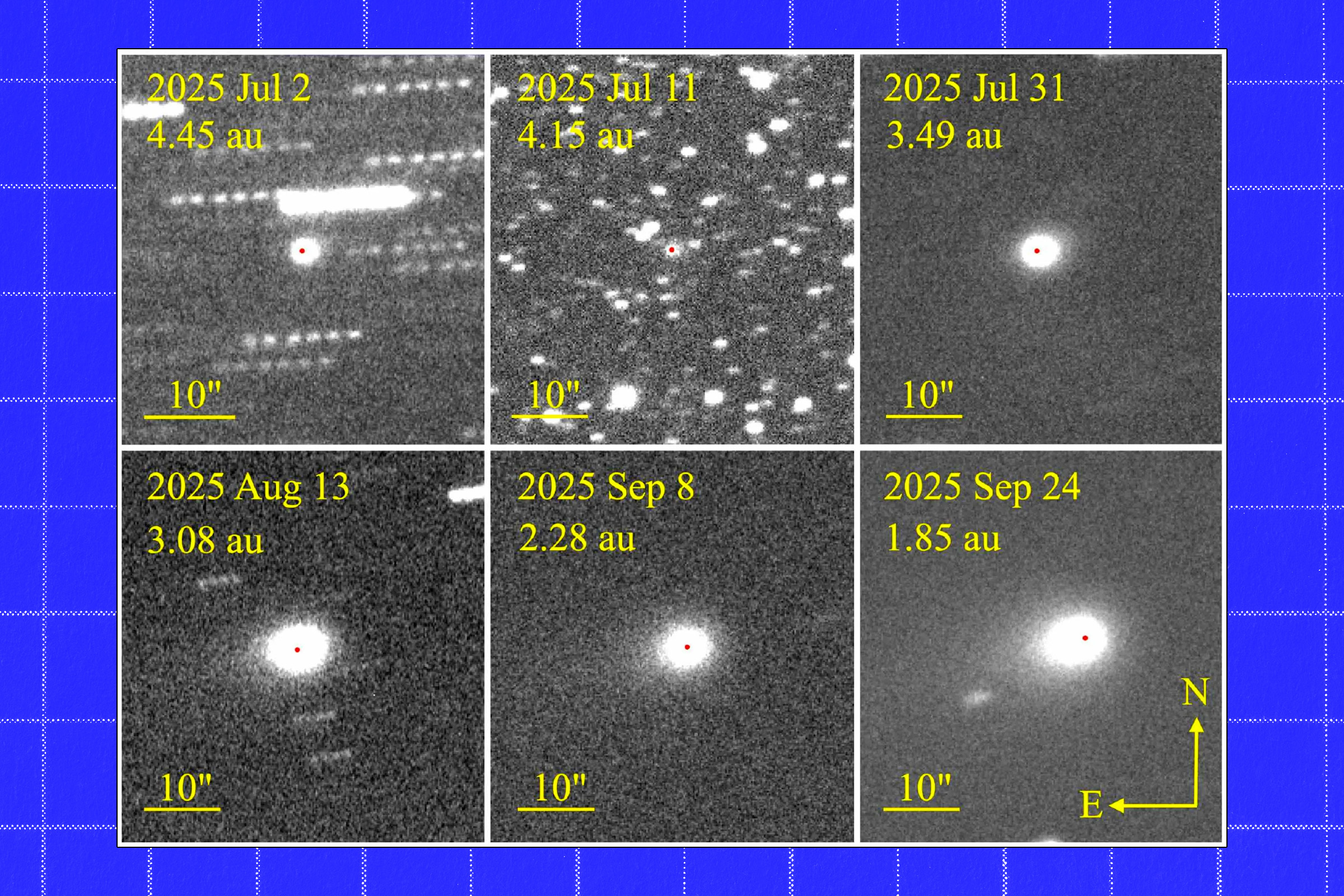Science
Astronomers Investigating Mysterious Interstellar Object’s Behavior

A newly identified interstellar object, dubbed 3I-ATLAS, has captured the attention of astronomers since its detection in early July. This intriguing entity, believed to be the third known interstellar object from outside our solar system, has sparked speculation and debate over its nature and behavior. While many scientists classify it as an interstellar comet, some, including controversial researcher Avi Loeb from Harvard University, propose that it could be a spacecraft from an alien civilization.
The object is currently obscured by the Sun, remaining unobservable from Earth for the next month. This temporary blind spot has prompted Loeb to suggest that the object may be utilizing this period to execute unexpected maneuvers. Recent observations from the Nordic Optical Telescope in the Canary Islands have revealed new insights.
Images from the telescope indicate that a “tail” of debris, which formed as 3I-ATLAS approached the Sun, has altered direction, now appearing to face the Sun. This phenomenon, known as an “anti-tail,” has been documented in other comets for decades. The anti-tail effect occurs due to the relative positions of the observer, the comet, and the Sun, creating an optical illusion that can mislead observers about the actual behavior of the object.
Loeb, however, offers a more provocative interpretation. In a recent blog post, he suggested that the anti-tail could indicate the presence of an alien craft applying “braking thrust.” This theory posits that the object is actively slowing down to extend its stay within our solar system. As Loeb stated, “If the object is an alien spacecraft slowing down, and the anti-tail is braking thrust, then this change from anti-tail to tail would be entirely expected near perihelion.”
He further elaborated that such a transition could represent a technosignature, suggesting controlled maneuvering with the potential aim of achieving a stable orbit between Mars and Jupiter. This hypothesis aligns with thoughts shared by his colleague Adam Hibberd at the Institute for Interstellar Studies.
Despite the excitement surrounding these claims, the scientific community remains divided. Many experts dismiss the idea that the object is anything other than an inert comet. As the debate continues, astronomers must await the object’s reappearance, expected on December 19, 2023. At that point, it will become clearer whether its trajectory has indeed been altered or if it is simply continuing its journey through space as an ordinary comet.
The implications of this research extend beyond mere curiosity. Understanding interstellar objects can enhance our knowledge of the universe and the potential for extraterrestrial life. As scientists delve deeper into the mysteries of 3I-ATLAS, the excitement over what they might uncover continues to grow.
-

 Business1 week ago
Business1 week agoIconic Sand Dollar Social Club Listed for $3 Million in Folly Beach
-

 Politics1 week ago
Politics1 week agoAfghan Refugee Detained by ICE After Asylum Hearing in New York
-

 Health1 week ago
Health1 week agoPeptilogics Secures $78 Million to Combat Prosthetic Joint Infections
-

 Science1 week ago
Science1 week agoResearchers Achieve Fastest Genome Sequencing in Under Four Hours
-

 Lifestyle1 week ago
Lifestyle1 week agoJump for Good: San Clemente Pier Fundraiser Allows Legal Leaps
-

 Health1 week ago
Health1 week agoResearcher Uncovers Zika Virus Pathway to Placenta Using Nanotubes
-

 World1 week ago
World1 week agoUS Passport Ranks Drop Out of Top 10 for First Time Ever
-

 Business1 week ago
Business1 week agoSan Jose High-Rise Faces Foreclosure Over $182.5 Million Loan
-

 World1 week ago
World1 week agoRegional Pilots’ Salaries Surge to Six Figures in 2025
-

 Science1 week ago
Science1 week agoMars Observed: Detailed Imaging Reveals Dust Avalanche Dynamics
-

 Entertainment1 week ago
Entertainment1 week agoJennifer Lopez Addresses A-Rod Split in Candid Interview
-

 Top Stories1 week ago
Top Stories1 week agoChicago Symphony Orchestra Dazzles with Berlioz Under Mäkelä









